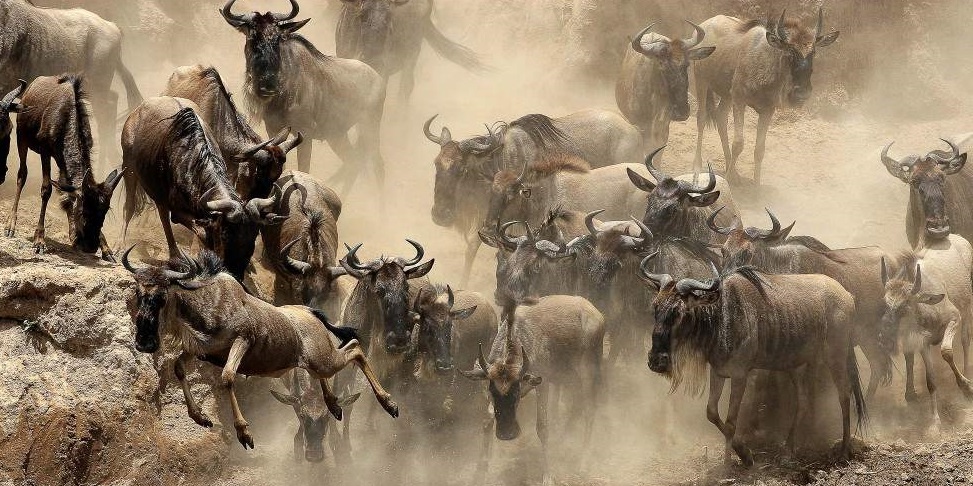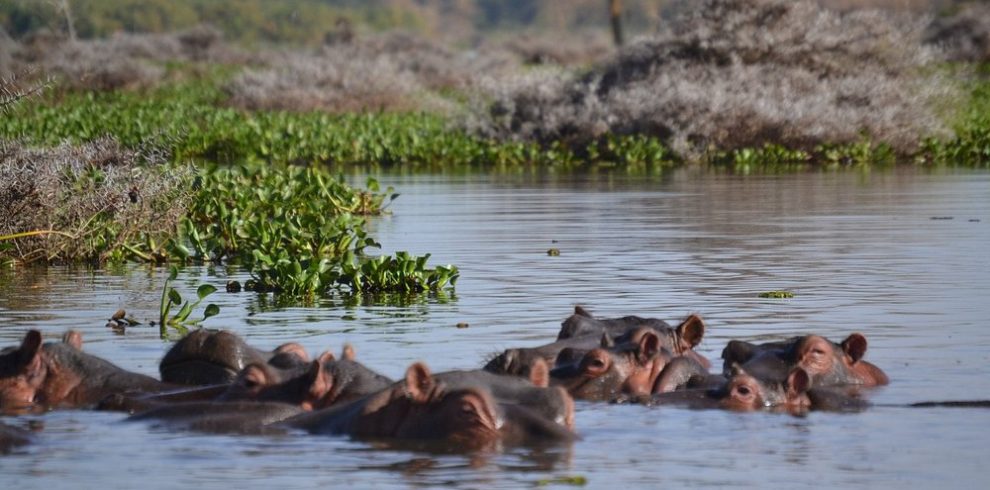
The Caracal (Caracal caracal) is a remarkable and elusive wild cat that inhabits the savannas, forests, and arid regions of Africa and parts of the Middle East and Central Asia. Known for its striking appearance and impressive hunting abilities, the caracal has long captivated the interest of wildlife enthusiasts and researchers alike.
Incorporating a multitude of habitats, this medium-sized cat remains a mystery as most people do not see them due to its deceptiveness and peculiar behavior. In this article, we will explore 5 fascinating facts about the Caracal, from its physical characteristics and hunting techniques to its cultural significance and conservation status. These facts will offer you a deeper understanding of why the caracal is such a unique and remarkable animal in the wild.
1. The Caracal is a Skilled and Powerful Hunter

One of the most impressive facts about the caracal is its incredible hunting prowess. As a carnivorous predator, the caracal relies on its agility, strength, and keen senses to catch a wide variety of prey. While many large cats, such as lions and leopards, rely on stealth and teamwork to hunt, the caracal is a solitary hunter that uses its exceptional skills to track and capture its prey.
The caracal is renowned for its ability to take down animals much larger than itself, particularly birds. It is even said to be one of the finest bird hunters in all wild cats. The caracal can leap incredible heights and catch birds in mid-air. It has been observed to jump as high as three meters (approximately 10 feet) in order to get a bird flying nearby and utilizes its strong hind legs to accelerate it within a very short distance accurately. This remarkable ability makes the caracal an agile and effective predator, able to ambush birds that are often difficult for other predators to catch.
In addition to birds, the caracal preys on a variety of mammals, including small ungulates, rodents, and hares. It also has good night vision, which enables it to have night hunts due to low light conditions at dawn, dusk and also at night. The caracal relies on stealth to stalk its prey, using its natural camouflage to blend into its environment. It silently stalks its victim and then makes a sudden powerful attack. The caracal’s sharp retractable claws are an important tool during hunting. They are applied to assist in order to understand and grab a prey after being caught so the animal does not have capability of escaping. The caracal’s hunting skills make it a highly effective predator in its natural habitat, and its ability to catch birds in mid-air is a particularly unique feature of its hunting strategy.
2. The Caracal’s Ears Are an Iconic Feature

Another fascinating fact about the caracal is its striking physical appearance, particularly its large, tufted ears. These distinctive ears are one of the most recognizable features of the caracal and serve several important functions in the cat’s daily life. The caracal’s ears are topped with long, black tufts of fur that stand out against its golden-brown coat. These tufts are not just for show, however; they play a crucial role in the caracal’s survival. The caracal’s tufted ears help it detect sounds from a distance.
The tufts are thought to enhance the caracal’s ability to hear high-pitched sounds, such as the calls of birds or the movements of small mammals. This makes the caracal a highly skilled listener, able to locate prey or detect potential threats even when they are far away. The tufts of fur also help protect the caracal’s ears from dust and debris when it is moving through dense vegetation. In addition to their practical function, the caracal’s ears are a striking visual feature that adds to its appeal.
The long black tufts make the caracal one of the most visually distinctive wild cats. These tufts are particularly prominent in younger caracals, giving them a youthful appearance, but they are retained throughout their lives, becoming more pronounced as the cat matures. The caracal’s ability to hear high-frequency sounds, combined with its acute sense of sight, allows it to detect prey and threats with remarkable precision. The ears form a part and parcel of its senses that makes it a successful hunter.
3. Caracals Have an Elusive Nature

One of the most intriguing facts about the caracal is its secretive and elusive nature. Unlike larger wild cats such as lions and leopards, the caracal is a solitary and relatively shy animal that avoids human contact whenever possible. This elusive behavior makes it difficult to observe the caracal in the wild, and much of what we know about this fascinating animal comes from indirect evidence and the observations of wildlife researchers.
The caracal is primarily nocturnal or crepuscular, meaning that it is most active during the night or at dawn and dusk. This behavior allows the caracal to avoid the heat of the day and hunt more effectively. Because it is primarily active during low-light hours, the caracal has excellent night vision, enabling it to navigate the terrain and catch prey with ease. During the day, caracals tend to rest in sheltered spots, such as dense shrubs, rocks, or caves. They are very territorial being and they also HEAD markins with scent glands at the base of the tail.
The caracal is a solitary creature that does not live in prides or groups, unlike lions or cheetahs. While they will interact with other caracals during mating season, they generally prefer to remain alone, hunting and living in seclusion. The caracal’s elusive nature makes it a challenging animal to study, and much of its behavior remains a mystery. But the fact that it can go undetected by the researchers as well as predators is a testimony of its adaptability and survival instincts. This elusive behavior also means that the caracal is rarely seen by humans in the wild, further contributing to its air of mystery.
4. The Caracal Has a Wide Range of Habitats

Another fascinating fact about the caracal is its ability to adapt to a variety of habitats across its range. The caracal is found in diverse environments, including savannas, dry forests, scrublands, and even mountainous regions. While it prefers areas with ample cover and access to water, the caracal can survive in a variety of landscapes, from deserts to wetlands. In Africa, the caracal is most commonly found in the savannas and open grasslands, where it can find plenty of prey.
It exists in areas with thick vegetation cover or rocky outcrops which offer cover in stalking its prey. In the Middle East and Asia, the caracal is found in a range of habitats, including arid deserts and rocky hillsides. In these areas, the caracal has adapted to the harsh, dry conditions by becoming a more opportunistic predator that relies on a variety of food sources. The caracal’s adaptability to different habitats is a testament to its evolutionary success. It can live in many types of climates and ecosystems, including the moist forests in West Africa to the arid deserts of the Arabian Peninsula. This wide range of habitats also allows the caracal to coexist with other predators, such as lions, hyenas, and leopards, while still maintaining its status as an apex predator in many of the environments it inhabits.
5. The Caracal is a Symbol of Strength and Grace in Culture

The caracal has been an important figure in various cultures throughout history, often symbolizing strength, grace, and independence. In ancient Egyptian culture, the caracal was admired for its hunting prowess and agility. It is believed that the Egyptians revered the caracal for its ability to hunt birds and small animals with great skill, and depictions of the caracal can be found in ancient Egyptian artwork. In modern times, the caracal continues to inspire people around the world. It is often seen as a symbol of freedom and independence, as the caracal is a solitary hunter that does not rely on the help of others.
It is an icon of speed and power due to its elegant moves, slim body, and a spectacular jumping capacity. The caracal’s stealthy and elusive behavior also adds to its mystique, making it an iconic figure in both wildlife and popular culture. In some regions, the caracal is also a symbol of the natural beauty and wild heritage of Africa and the Middle East. As a species that thrives in diverse habitats and maintains its status as an apex predator, the caracal embodies the resilience and adaptability of the natural world.
Conclusion
The caracal is a fascinating and mysterious wild cat that continues to capture the imaginations of those who encounter it. From its remarkable hunting abilities and agility to its elusive behavior and wide range of habitats, the caracal is an animal that exemplifies the grace, power, and independence of wild cats. Whether it is leaping high into the air to catch birds, stalking prey with silent precision, or symbolizing strength in culture, the caracal is truly one of nature’s most remarkable creatures. By understanding 5 fascinating facts about the caracal, we can gain a deeper appreciation for this enigmatic and powerful animal. As we continue to study and protect the caracal, we ensure that this extraordinary predator remains a part of our world for generations to come.






